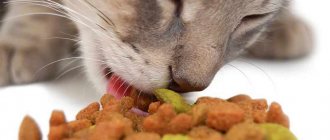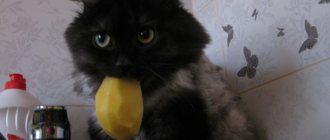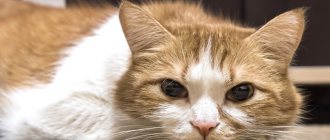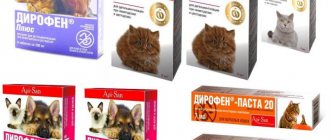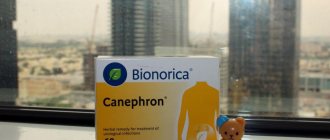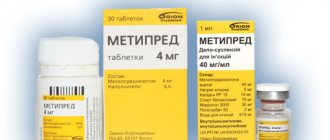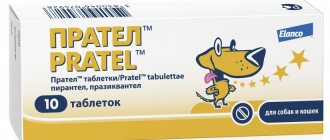Duphalac is a laxative used to treat constipation in cats. The drug has a mild effect. The medicine was created for people, although it has also been successfully used for pets. A safe and effective remedy for eliminating intestinal problems. Safety is evidenced by the fact that this laxative is approved even for newborns.
general description
Duphalac is produced in the form of syrup. The formula of the drug is developed based on the use of lactulose, which is a synthetic polysaccharide of fructose. In addition to lactulose, the composition also includes purified water. The drug does not contain:
- preservatives;
- dyes;
- flavorings;
- other chemicals.
Therefore, Duphalac is considered safe for both small children and cats, whose bodies are also vulnerable to various factors.
To package the syrup, polymer bottles with a screw cap with a capacity of 200, 500 and 1000 ml are used. The medicine is also packaged in 15 ml foil bags. 10 of these bags are placed in a cardboard package. The second packaging option is more preferable for cats, although the purchased medicine can be used for animals and all household members.
The medicine does not require special storage. It is enough to place it in a dark and dry place, inaccessible to sunlight. In this case, the air temperature should be between 10 and 25 degrees Celsius. A home or veterinary first aid kit is suitable for storage.
Properties and action
The syrup has a pronounced laxative effect. The principle of action of the medicine is that lactulose acts as a nutrient medium for lactobacilli, which leads to an increase in their number. Beneficial bacteria improve intestinal function. In addition, lactulose in the digestive system breaks down into low molecular weight acids, which reduces the acidity in the intestinal lumen. As a result of this action, the consistency and quantity of intestinal contents changes, which, in turn, stimulates its peristalsis.
The drug also has a positive effect on the absorption of phosphate and calcium salts. Among the features of Duphalac, it is worth noting its participation in nitrogen metabolism. The drug improves the migration of ammonia from the blood to the intestines and prevents its spread throughout the body. Dangerous compounds are excreted along with feces, thereby preventing poisoning as a result of impaired nitrogen metabolism. In addition, the drug has an enveloping effect, therefore reducing irritation of the intestinal mucosa.
The high effectiveness of the drug is due to the fact that it is practically not absorbed in the gastrointestinal tract and reaches the large intestine unchanged. Only in the large intestine does it interact with microflora and begin to act.
Causes
Stool retention is not an independent pathology, but a sign of an underlying disease. The following are the causes of constipation:
- neglect of the dog owner;
- physiological state;
- diseases.
The owner's oversight is manifested in the following:
- Power supply errors. Lack of dietary fiber when feeding a natural diet. Constipation from bones that block the intestines. Lack of water when feeding dry granules.
- Adynamia leads to relaxation of the smooth muscles of the intestine. Food stagnates, thickens, and clogs the alimentary tract. Residents of apartments in high-rise buildings suffer if you rarely walk them.
- Stress. Each dog reacts individually to unusual situations. Most often, dogs suffer when there is a change of owner, transportation, participation in expert exhibitions, or the appearance of another pet in an apartment or enclosure.
- Ingestion of foreign objects. Puppies are most susceptible due to curiosity or unbalanced nutrition. A growing body needs calcium, which is not enough in the natural diet. Once I had to dissect a four-month-old Caucasian Shepherd puppy. There were stones in the cub's stomach that blocked the exit to the intestines. In this case, the result was imaginary constipation. The puppy stopped eating, so there was no bowel movement.
Stool retention
Physiological condition - constipation in a pregnant dog occurs because the uterus presses on the intestinal loops. Moisture is absorbed from the food coma, the mass compacts, thickens and does not pass through the anus. Hormonal surges during estrus can lead to stool retention. Another option is constipation in older dogs. The smooth muscle wall of the intestine loses the ability for peristaltic contractions due to the decline of reproductive functions, as well as chronic diseases.
The postoperative condition also contributes to stool retention. Anesthesia dampens the muscle tone of the intestinal walls. A recovering dog is afraid to push because tension is accompanied by pain.
Constipation occurs as a result of non-contagious diseases, as well as infections that affect the nervous system:
- damage to the spine leads to disruption of the intestinal innervation;
- inflammation of the paraanal glands is accompanied by pain in the anus and reflex spasm of the sphincter;
- inflammation of the stomach or intestines;
- blockage of the intestines with balls of helminths;
- diseases of the kidneys, pancreas and liver disrupt digestive processes;
- obesity or exhaustion weaken peristaltic contractions;
- side effects of medications;
- damage to the nervous system, paralysis;
- inflammation of the prostate gland in males;
- neoplasms in the intestines.
When to use
The instructions for use are written for people, but Duphalac is used for cats for similar problems. Typically the drug is used in the following cases:
- in the absence of stool for a long period;
- with frequent constipation;
- with difficulty in emptying due to solid masses;
- with bloating and flatulence.
The medicine can also be used after deworming. The syrup accelerates the removal of worms from the body and thereby prevents possible intoxication. The medication is used effectively when there is a large accumulation of hair in the intestines, if the cat cannot get rid of it on its own.
Note! If an animal has problems with stool, before using the syrup, you need to undergo an examination to make sure that the intestines are obstructed and to find out the cause of the pathology. In addition, the dosage of the drug must be calculated by the doctor.
What is constipation
Constipation is considered to be the process of cleansing the intestines from feces, which is difficult, very rare or absent altogether.
If your pet has stool 1 or 2 times every 3 days, and during the process the dog experiences severe pain, then you can safely suspect constipation.
With this phenomenon, feces in the animal’s intestines tend to accumulate, dry out, thicken and become the cause of severe discomfort for the four-legged pet. Additionally, dried stool can cause serious damage and injury to the intestines.
Coprostasis or constipation is a fairly common occurrence in dogs and occurs mainly in old and physically inactive pets. Constipation is often diagnosed in animals whose diet is dominated by bones.
How to use
The laxative should be used internally. The syrup has a sickly sweet taste, so most cats refuse to eat it voluntarily. The problem can be solved in several ways:
- Use a syringe without a needle to measure the required amount of medicine. Force the syrup into the mouth. Make sure your pet doesn't spit it back out. To do this, keep your head elevated until he swallows everything.
- Dilute the medicine in drinking water. If the animal refuses to drink water with a sweetish taste, then it is worth force-drinking it. Usually the medicine is diluted with water, and then small kittens are given it to drink.
- The syrup can be mixed with food. Wet food and canned food are good for these purposes. The pet will not even notice that there is a laxative in the food.
Note! It is not recommended to give the medicine together with fermented milk products.
In the instructions for use you will not find the dosage of Duphalac for cats, since the drug is designed for people. Most often, a dosage of 0.5-1 ml per 1 kg of animal is used, but the veterinarian must accurately calculate it. It takes into account not only the weight of the pet, but also its condition, the possible negative effect of the medicine on the body and other factors. Small kittens are given no more than 0.5 ml of syrup. If necessary, repeat the dose after 8 hours. If after 2-3 doses the animal still fails to empty its intestines, you should consult a doctor and re-do the examination, in particular, do an ultrasound.
Sometimes the drug is used to enhance the effect of other laxatives. In this case, the dosage must be calculated especially carefully so as not to get the opposite result.
Symptoms of constipation in dogs
If the owner notices that his pet has not had bowel movements for more than a day, this is a serious reason to consult a veterinarian.
The following symptoms indicate that your dog is constipated:
- refusal of food;
- It’s hard for the dog to go big. The animal often sits down, but, as a rule, to no avail;
- an increase in the size of the abdomen as a result of the accumulation of gases in it;
- stool is dry, hard, excreted in small quantities;
- the dog behaves restlessly, often whines (especially when attempting to defecate). lethargy and depressed state of the pet.
The owner can conduct an examination of the animal himself; to do this, he must put a rubber glove on his hand, lubricate his finger with Vaseline or vegetable oil and carefully insert it into the dog’s anus.
If the rectum is empty, there is a danger of complete intestinal obstruction, which means the dog needs to be taken to a doctor. In some cases, constipation may cause vomiting; this is considered a very serious symptom and can often lead to death for the animal.
Contraindications and possible side effects
The drug has no serious contraindications. It should not be used if you are intolerant to the components, which may manifest as disruption of the digestive system or allergic reactions. Duphalac is also prohibited for intestinal obstruction. If the animal has diabetes mellitus, use is only possible under the supervision of a veterinarian, and in some cases it is more reasonable to choose another remedy.
If you follow the dosage and regimen recommended by the doctor, cats will tolerate the medication without any problems. In case of an overdose, unpleasant symptoms may occur:
- severe diarrhea (may contain foam);
- nausea and vomiting;
- bloating and constant rumbling in the stomach;
- increased muscle tone in the abdomen.
If problems with the food system appear, the animal is given Smecta or another remedy with a similar effect. If symptoms do not go away within 1-2 days, you should seek help from a veterinarian.
Advantages and disadvantages
The main advantages of Duphalac include the following:
- It is highly effective and helps the animal quickly get rid of constipation. In most cases, one dose is enough.
- Sold in all regular pharmacies. If there is no veterinary pharmacy nearby, this will not be a problem when purchasing a laxative.
- It has practically no contraindications and can be used for kittens and adult pets.
- There is no need to comply with special storage conditions.
- Sold in small convenient packages.
You won’t be able to calculate the dose yourself – and this is the main drawback. In case of overdose, serious problems with the digestive system can occur. Some cats categorically refuse to take the medicine because they do not like the cloying sweet taste. It is not always possible to mix the product into food or water, but forced use can turn into real torture due to the pet’s resistance.
Preventing constipation
Stagnation of feces in the intestines is much easier to prevent than to treat the pet in the future, so the owner’s adherence to simple rules of prevention will help protect his furry pet from this unpleasant phenomenon.
The dog owner must:
- Follow the feeding regime for your four-legged friend; you should always give food to the animal at the same time and in moderation.
- Do not feed your dog bones (especially chicken bones). If the owner wants to pamper his pet with a sugar bone, then the treat should only be raw and not have sharp edges. It is best to use pork bones to feed your dog; beef and chicken bones tend to split into sharp pieces, which will cause injury to the stomach and intestines, and also lead to constipation.
- The diet should be balanced; you should not feed the dog fatty, difficult-to-digest foods.
- Remove from your diet foods that contribute to the formation of gases in the stomach and intestines (corn, potatoes, legumes, cabbage).
- Walk the dog more, and the walks should be long and physically active.
- Provide your pet with clean and fresh water, which should always be freely available to the animal.
- Add vitamins, minerals, and special additives to your dog’s food.
- Do not feed your dog immediately before a walk. After eating, at least 30 minutes must pass before the animal is allowed to go outside.
- Carry out regular deworming and vaccination of the animal.
You need to start treating constipation immediately, without waiting for the phenomenon to take a chronic form. It is best to entrust the elimination of the disease to a professional.
Owner reviews
Julia, owner of a British cat:
“After sterilization, Martha had difficulty moving her bowels. When she couldn't go to the toilet for 3 days after surgery, I raised the alarm and called the vet. He advised using Vaseline oil or Duphalac. The oil did not give any results, so I had to run to the pharmacy the next day. After the syrup, the cat went to the toilet 4 hours later. The result is excellent. True, it’s difficult to call the reception pleasant; everything around was sticky. Martha simply spat out the medicine.”
Lyudmila, owner of a one-year-old cat:
“We used Duphalac on a kitten when he was a couple of weeks old. Due to the transition from mother's milk to feed, digestive problems arose, in particular increased gas formation. The drug helped get rid of the pathology. Now we have a strong and healthy cat growing up.”
